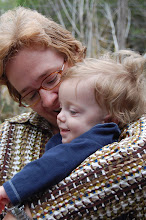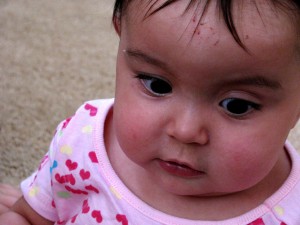Wow! What a whirlwind 48 hours!
We are still in Austin tonight. The conference just ended a few hours ago, but we decided to stay an extra night so we didn’t have to drive home late at night and exhausted. Good call on our part, huh? 🙂 I think so!
I’m so glad we came. I really am. We went to quite a few informative sessions including legislative outcomes of special needs legislation from the last session, discussing how we all deal with grief, learning how to navigate the MDCP, CLASS, and other financial and equipment assistance that the state provides, and a few others that are slipping my mind at the moment.
I met SO MANY wonderful new people, all parenting a child (or children) with so many different types of special needs. I didn’t meet anyone else who was parenting a child with a life-limiting or rare disease, but I still felt a common bond with many of the people I met.
Ethan and Abigail had a great time in their respective child-care rooms. They were just suites that were reserved for certain age groups. Abigail made a “new best friend” for the weekend, this 6yo girl who lives about 3 hours from us. They were joined at the hip. On Friday night, at the family dinner party, they were holding hands, and hugging, and just being so girly! It was adorable. Ethan didn’t make any “friends,” but he did have a good time.
Even though neither Ethan nor Abby has made any comments about meeting so many children with so many different types of special needs (including Cerebral Palsy, Autism, Down Syndrome, etc) and different types of assistive equipment (wheelchairs, oxygen, etc.), I know that exposure to these children as just “regular kids” was so good for them. Questions may come down the line, and we will deal with them at that time.
Tomorrow we are going to explore Austin a little bit, and then we are going to head back home and start getting ready for a jam-packed July!
I can’t wait until next year’s conference!
 Hannah had a great, great PT day again today! I tell ya, Ms. Pam, the therapist, definitely knows how to work with Hannah. Hannah has been using her Surestep orthotics for about a week now, and today was her first day using them in PT.
Hannah had a great, great PT day again today! I tell ya, Ms. Pam, the therapist, definitely knows how to work with Hannah. Hannah has been using her Surestep orthotics for about a week now, and today was her first day using them in PT.  Even though we have only known each other about 6 months or so, I really feel like I have connected with Nicole, Grey’s mom. We met via blogs back then, and then
Even though we have only known each other about 6 months or so, I really feel like I have connected with Nicole, Grey’s mom. We met via blogs back then, and then 

Latest Comments